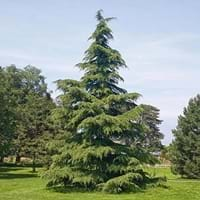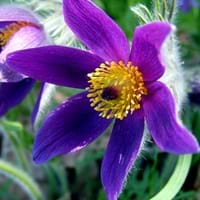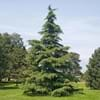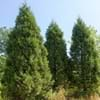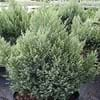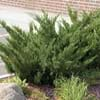Life Span
Perennial
Annual and Perennial
Type
Needled or Scaled Evergreen
Perennial
Origin
Southern Asia, India, Nepal
Europe, Eastern Europe, Southern Europe, Western Europe, United Kingdom
Types
Curly Locks, Roman Gold, Emerald Falls Pendula
Pulsatilla vulgaris, Pulsatilla vulgaris rubra, Pulsatilla vulgaris alba
Habitat
Woodland Garden Canopy
meadows, Slopes, Wooded slopes
USDA Hardiness Zone
7-9
5-7
Sunset Zone
3a, 3b, 4, 5, 6, 7, 8, 9, 10, 11, 12, 14, 15, 16, 17, 18, 19, 20, 21, 22, 23, 24
2b, 3a, 3b, 4, 5, 6, 15, 16, 17
Habit
Pyramidal
Clump-Forming
Flower Color
Non Flowering Plant
Indigo, Purple, Violet
Flower Color Modifier
Bicolor
Not Available
Fruit Color
Brown, Green, Plum
Greyish Brown
Leaf Color in Spring
Green, Blue Green
Light Green
Leaf Color in Summer
Green, Blue Green
Light Green
Leaf Color in Fall
Green, Blue Green
Light Green
Leaf Color in Winter
Blue Green, Gray Green, Dark Green
Light Green
Leaf Shape
Needle like
Rosette
Plant Season
Spring, Summer, Fall, Winter
Spring
Sunlight
Full Sun
Full Sun
Type of Soil
Clay, Loam
Loam, Sand
The pH of Soil
Neutral, Alkaline
Neutral, Alkaline
Soil Drainage
Average
Well drained
Bloom Time
Early Spring, Late Spring, Mid Spring
Early Spring, Spring
Tolerances
Drought
Drought
Where to Plant?
Ground
Ground, Pot
How to Plant?
Seedlings
root cutting, Seedlings
Plant Maintenance
Medium
Medium
Watering Requirements
occasional watering once established
Medium
In Summer
Lots of watering
Lots of watering
In Spring
Moderate
Moderate
In Winter
Average Water
Average Water
Soil pH
Neutral, Alkaline
Neutral, Alkaline
Soil Type
Clay, Loam
Loam, Sand
Soil Drainage Capacity
Average
Well drained
Sun Exposure
Full Sun
Full Sun
Pruning
Prune if you want to improve plant shape
Remove damaged leaves, Remove dead branches, Remove dead leaves
Fertilizers
General purpose fertilizer with an NPK ratio 3-1-2
All-Purpose Liquid Fertilizer
Pests and Diseases
Free of serious pests and diseases
Cutworms, Larvae of Agave Weevil
Plant Tolerance
Drought
Drought
Flower Petal Number
Single
Single
Fragrant Bark/Stem
Yes
No
Foliage Texture
Fine
Fine
Foliage Sheen
Glossy
Matte
Attracts
Not Available
Not Available
Allergy
no allergic reactions
convulsions, Diarrhea, Not Available, Stomach pain, Vomiting
Aesthetic Uses
Showy Purposes
along a porch, deck or patio, Showy Purposes
Beauty Benefits
Not Available
Not Available
Environmental Uses
Air purification
Air purification
Medicinal Uses
Antidote, Antifungal, Astringent, Carminative, Diaphoretic, Diuretic, tuberculosis
Not Available
Part of Plant Used
Inner Wood, Outer Bark
Not Available
Other Uses
Incense, Oil is used for aromatherapy, The essential oil is used as insect repellent, Used as a building material, Wood is used to store meat and food grains
Showy Purposes
Used As Indoor Plant
No
No
Used As Outdoor Plant
Yes
Yes
Garden Design
Feature Plant, Screening, Wind Break, Shade Trees
Alpine, Mixed Border, Rock Garden / Wall
Botanical Name
CEDRUS deodara
PULSATILLA vulgaris
Common Name
Deodar Cedar, Himalayan Cedar
Pasque Flower, wind flower, prairie crocus, Easter Flower, meadow anemone
In Hindi
देवदार
Pasque Flower
In German
Deodar Cedar
Kuhschellen
In French
Deodar Cedar
Pasque Flower
In Spanish
Deodar Cedar
Pasque Flower
In Greek
κέδρους Cedar
Pasque Flower
In Portuguese
Deodar Cedar
Pasque Flower
In Polish
Deodar Cedar
Sasanka
In Latin
Deodar Cedar
Pasque Flower
Phylum
Coniferophyta
Vascular plant
Class
Pinopsida
Magnoliopsida
Order
Pinales
Ranunculales
Family
Pinaceae
Ranunculaceae
Clade
Not Available
Angiosperms, Eudicots
Subfamily
Abietoideae
Not Available
Number of Species
Not Available
Season and Care of Deodar Cedar and Pasque Flower
Season and care of Deodar Cedar and Pasque Flower is important to know. While considering everything about Deodar Cedar and Pasque Flower Care, growing season is an essential factor. Deodar Cedar season is Spring, Summer, Fall and Winter and Pasque Flower season is Spring, Summer, Fall and Winter. The type of soil for Deodar Cedar is Clay, Loam and for Pasque Flower is Loam, Sand while the PH of soil for Deodar Cedar is Neutral, Alkaline and for Pasque Flower is Neutral, Alkaline.
Deodar Cedar and Pasque Flower Physical Information
Deodar Cedar and Pasque Flower physical information is very important for comparison. Deodar Cedar height is 1,520.00 cm and width 760.00 cm whereas Pasque Flower height is 12.70 cm and width 15.20 cm. The color specification of Deodar Cedar and Pasque Flower are as follows:
Deodar Cedar flower color: Non Flowering Plant
Deodar Cedar leaf color: Green and Blue Green
Pasque Flower flower color: Indigo, Purple and Violet
- Pasque Flower leaf color: Light Green
Care of Deodar Cedar and Pasque Flower
Care of Deodar Cedar and Pasque Flower include pruning, fertilizers, watering etc. Deodar Cedar pruning is done Prune if you want to improve plant shape and Pasque Flower pruning is done Remove damaged leaves, Remove dead branches and Remove dead leaves. In summer Deodar Cedar needs Lots of watering and in winter, it needs Average Water. Whereas, in summer Pasque Flower needs Lots of watering and in winter, it needs Average Water.
